
PUMPA - SMART LEARNING
எங்கள் ஆசிரியர்களுடன் 1-ஆன்-1 ஆலோசனை நேரத்தைப் பெறுங்கள். டாப்பர் ஆவதற்கு நாங்கள் பயிற்சி அளிப்போம்
Book Free Demo
Two lines lying on the same plane either have only one common point or do not have a single common point.
In a case, they say that the lines intersect, in the second case, the lines do not intersect.
The two straight lines on the plane \(a\) and \(b\) which do not intersect are called parallel lines and are as .

Important!
If we consider two lines that do not lie in the same plane, then it is possible that the lines do not intersect each other. So, they are not parallel lines.
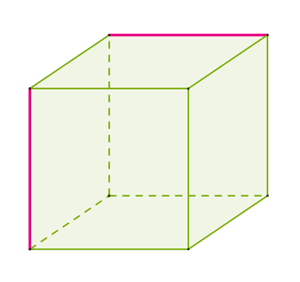
One of the signs of parallel lines on a plane is:
1. If two lines on the plane are perpendicular to the same line, then they are parallel.
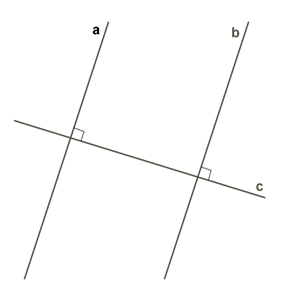
This feature is easy to prove if we recall that only one perpendicular can be drawn to a line in a plane from any point.
Suppose, the lines perpendicular to the same line are not parallel, that is, they have a common point.
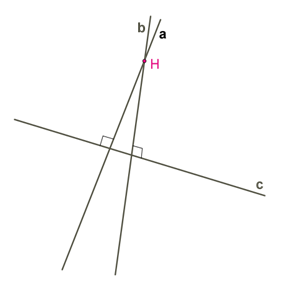
It turns out a contradiction - point \(H\) is straight to point \(c\), two perpendiculars are seen. It is impossible, therefore two lines on the plane, perpendicular to the same line, are parallel.
To consider other signs, you need to familiarize yourself with some types of angles:
1) Names and properties of the angles that form two intersecting straight lines are:
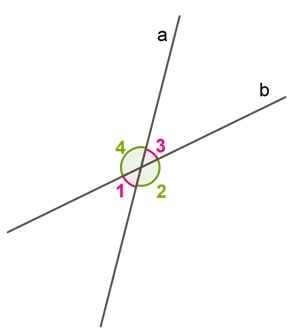
The vertical angles are .
Sum of adjacent corners will be : .
2) If two lines intersect the third line, then the angles are called like this:
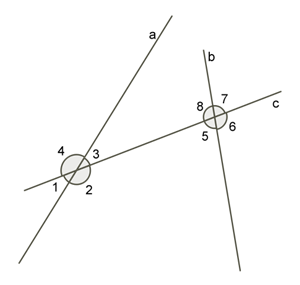
lying corners: and ; and ;
corresponding angles: and ; and ; and ; and ;
one-sided angles: and ; and .
corresponding angles: and ; and ; and ; and ;
one-sided angles: and ; and .
These angles will help determine the parallelism of the lines \(a\) and \(b\). So, another sign of parallelism of lines on the plane is:
2. If at the intersection of two lines of the third secant:
- the lying corners are equal, or
- the respective angles are equal, or
- the sum of the one-sided angles is equal to - then the lines are parallel.
- the lying corners are equal, or
- the respective angles are equal, or
- the sum of the one-sided angles is equal to - then the lines are parallel.
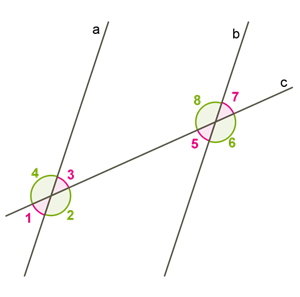
Let us prove this feature.
If the lines \(a\) and \(b\) cross a straight line \(c\), and the angles lying are equal, then the straight lines \(a\) and \(b\) are parallel.
For example, if then .
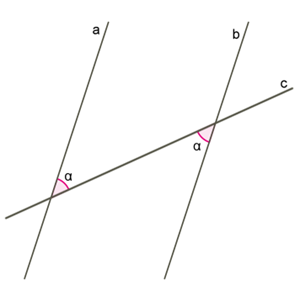
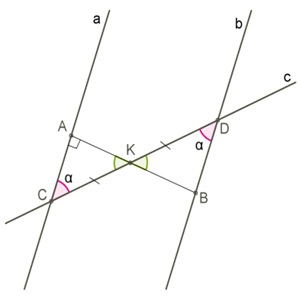
1) Note the points \(C\) and \(D.\) In which direct \(a \) and \(b \) crosses a straight line \(c\). Through, the midpoint \(K\) draw a perpendicular of this segment \(AB\) to straight \(a\).
2) like vertical angles , \(CK=KD\) which means based on a side and two adjacent corners.
3) If and are equal, then AB is perpendicular to straight b.
4) According to the first proven feature, the lines perpendicular to the same line are parallel.
5) In the case when the corresponding angles are equal, we mean that the vertical angles are equal, and we prove, as in paragraphs 1) - 4).
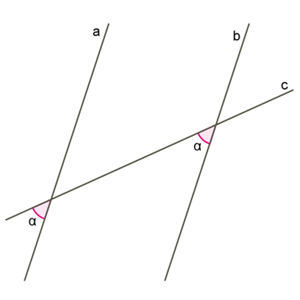
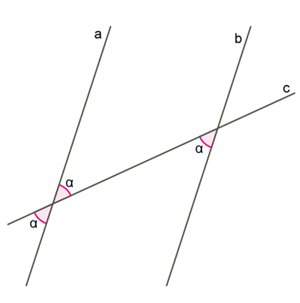
6) In the case when the sum of one-sided angles is , we mean that the sum of adjacent angles is also equal , and we use paragraphs 1) - 4) in the proof.
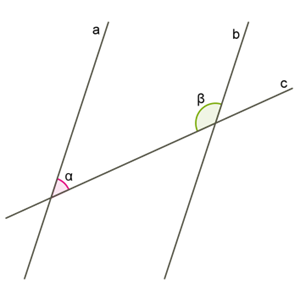
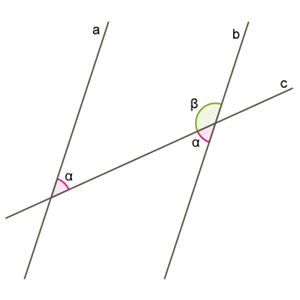
3. The sign of parallel lines also acts as a property of parallel lines.
At the intersection of two parallel lines of the third secant:
- the cross angles are equal,
- the corresponding angles are equal,
- the sum of the one-sided angles is equal to .
- the cross angles are equal,
- the corresponding angles are equal,
- the sum of the one-sided angles is equal to .